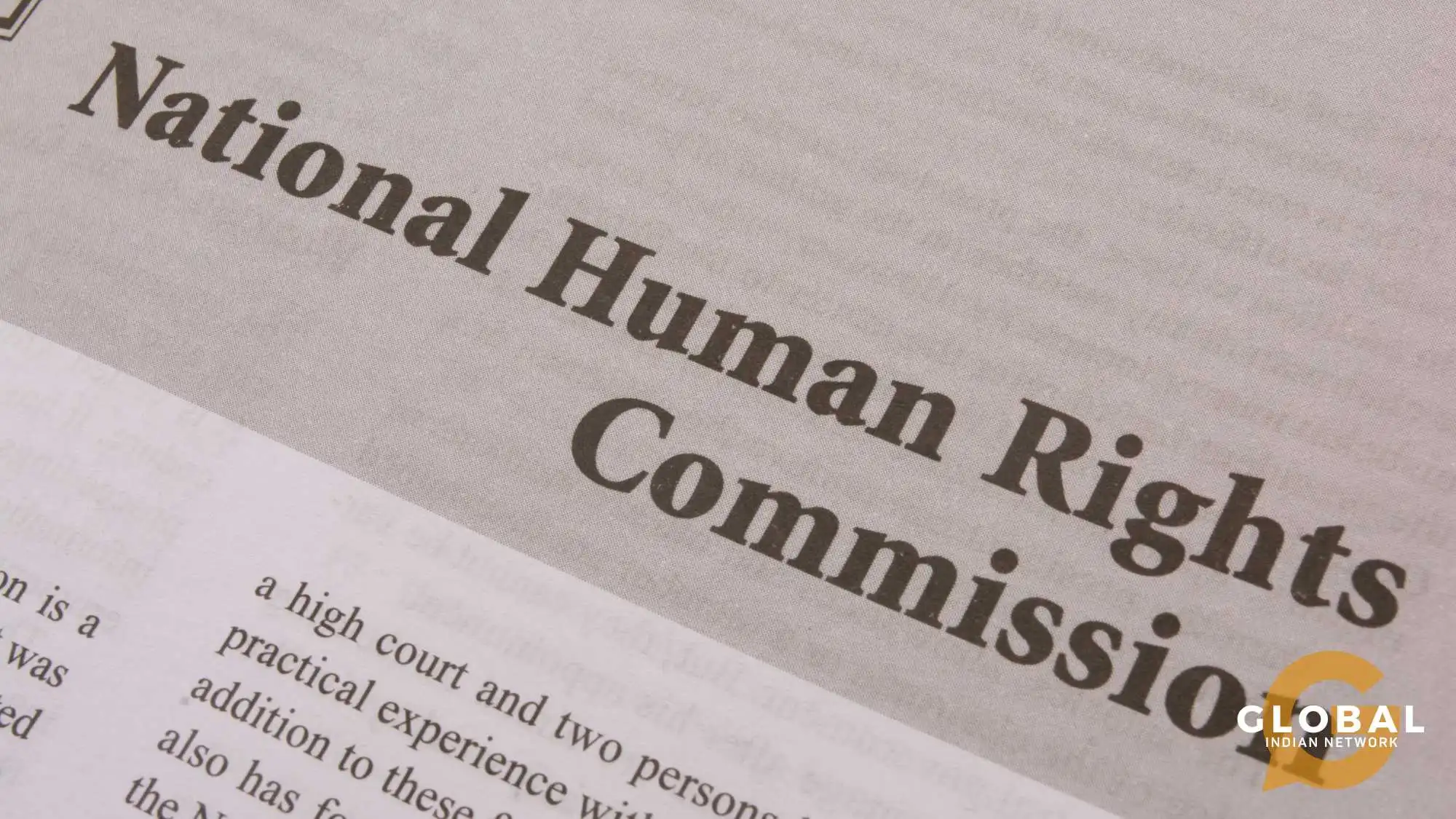The National Human Rights Commission (NHRC) of India plays a pivotal role in protecting and promoting human rights in the country. Established in response to growing concerns about human rights violations, the NHRC works to ensure that the fundamental rights and freedoms of individuals are upheld. This article delves into the various functions of the National Human Rights Commission, its origins, structure, and the broader context within which it operates.
Table of Contents
What are Human Rights?
Human rights are the basic rights and freedoms that belong to every person in the world, from birth until death. These rights apply regardless of where you are from, what you believe, or how you choose to live your life. They can never be taken away, although they can sometimes be restricted – for example, if a person breaks the law or in the interests of national security.
Human rights encompass a wide range of protections and freedoms, including:
Civil and Political Rights
These include the right to life, freedom of speech, freedom of assembly, and the right to a fair trial.
Economic, Social, and Cultural Rights
These include the right to work, the right to education, and the right to an adequate standard of living.
The recognition and protection of human rights are essential for the development of societies and for the promotion of peace and stability.
YOU MIGHT BE INTERESTED IN: The Complexities of Human Rights and Terrorism in India
What are the Types of National Human Rights Institutions?
National human rights institutions (NHRIs) are bodies established by governments to protect and promote human rights within their respective countries. These institutions vary in structure and function but generally fall into the following categories:
Human Rights Commissions
These are the most common type of NHRI and are often mandated to investigate and address human rights abuses, provide advice to the government, and educate the public about human rights.
Ombudsman Institutions
These institutions typically focus on protecting individuals from maladministration and ensuring good governance.
Advisory Bodies
Some NHRIs serve primarily as advisory bodies, providing recommendations to the government on how to improve human rights protections.
NHRIs are crucial in bridging the gap between international human rights standards and local realities, ensuring that human rights are respected and upheld at the national level.
Why are National Human Rights Institutions Important?
National human rights institutions (NHRIs) like the NHRC are crucial for several reasons:
- Accessibility: NHRIs provide a local mechanism for individuals to report human rights violations, making it easier for victims to seek redress.
- Implementation of International Standards: NHRIs help to ensure that international human rights standards are implemented at the national level.
- Independence and Impartiality: As independent bodies, NHRIs can impartially investigate human rights abuses and hold governments accountable.
- Promotion and Education: NHRIs play a key role in educating the public about human rights and promoting a culture of respect for human rights.
- Protection of Vulnerable Groups: NHRIs focus on the protection of the rights of marginalized and vulnerable populations, ensuring that their voices are heard and their rights are protected.
What is NHRC?
The National Human Rights Commission (NHRC) of India is an autonomous statutory body established in 1993 under the Protection of Human Rights Act. The NHRC is responsible for protecting and promoting human rights in India. It operates independently of the government, with the power to investigate human rights violations, recommend remedial actions, and promote awareness about human rights to all sections of society.
What Led to the Formation of NHRC?
The formation of the NHRC was driven by the increasing awareness of human rights issues in India and the need for a dedicated body to address these concerns. Several factors contributed to its establishment:
Global Human Rights Movement: The global human rights movement, particularly the adoption of the Universal Declaration of Human Rights in 1948, inspired many countries, including India, to take concrete steps towards protecting human rights.
Internal Pressures: Human rights violations in India, including custodial deaths, police brutality, and discrimination against marginalized groups, highlighted the need for a dedicated institution to address these issues.
Legal and Constitutional Mandates: The Indian Constitution enshrines fundamental rights that require protection and enforcement. The NHRC was created to uphold these constitutional guarantees.
What is the Composition of NHRC?
The NHRC is a multi-member body constituted by the central government, embodied into international covenants, and is composed of:
- Chairperson: Arun Kumar Mishra is the current Chairman of the National Human Rights Commission and a former judge of the Supreme Court. His predecessor was Justice H. L. Dattu.
- Members:
- One member who is, or has been, a Judge of the Supreme Court of India.
- One member who is, or has been, the Chief Justice of a High Court.
- Two Members are to be appointed from amongst persons knowing of or having practical experience in matters relating to human rights.
In addition to these members, the NHRC also includes ex-officio members, such as the Chairpersons of the National Commission for Minorities, the National Commission for Scheduled Castes, the National Commission for Scheduled Tribes, and the National Commission for Women.
What are the Functions of the National Human Rights Commission?
The NHRC is entrusted with a wide array of functions to protect and promote human rights. Some of the key functions include:
Inquiry and Investigation
The NHRC has the authority to inquire into complaints of violation of any allegation of violation of human rights, either on its initiative or upon receiving a complaint from an individual or organization, and also trigger the initiation of proceedings. It can also intervene in court proceedings involving human rights issues.
Recommendations
Based on its investigations and other international instruments, the NHRC can recommend steps to be taken to redress human rights violations to the government. This includes recommending changes in policies, laws, and practices to prevent future violations.
Monitoring and Review
The NHRC monitors the implementation of international human rights treaties to which India is a party and reviews factors, including acts of terrorism, that inhibit the enjoyment of human rights.
Human Rights Education and Training
The NHRC promotes awareness about human rights through educational programs, seminars, and workshops. It also provides training to government officials, law enforcement personnel, armed forces, civil society, and other stakeholders.
Research and Publications
The NHRC researches various human rights issues and publishes reports, manuals, and guidelines to inform and educate the public and policymakers.
Protection of Vulnerable Groups
The NHRC pays special attention to the living conditions of inmates in prison and the protection of the rights of marginalized and vulnerable sections, such as women, children, Scheduled Castes, Scheduled Tribes, and persons with disabilities.
What is the State Human Rights Commission?
The State Human Rights Commissions (SHRCs) are established in individual states of India to address human rights issues at the state level. Each SHRC operates independently but works in tandem with the NHRC to ensure comprehensive coverage of human rights protection across the country. The structure and functions of SHRCs are similar to those of the NHRC, with state-specific mandates and powers.
Structure of SHRCs
State Human Rights Commissions (SHRCs) are established in individual states of India to address human rights issues at the state level. The structure of SHRCs is designed to ensure independence and effectiveness in carrying out their mandates. Typically, the structure includes:
- Chairperson: The Chairperson is usually a retired Chief Justice of a High Court or a retired Judge of a High Court.
- Members: The SHRC includes members with practical experience in human rights issues. Generally, the commission consists of:
- One member who is or has been a Judge of a High Court.
- One member who is or has been a District Judge.
- Two members appointed from amongst persons having knowledge of, or practical experience in, matters relating to human rights.
The appointments to the SHRC are made by the Governor of the respective state, based on the recommendations of a committee consisting of the Chief Minister, Speaker of the Legislative Assembly, Minister in charge of the Department of Home in that state, Leader of the Opposition in the Legislative Assembly, and, in states with a Legislative Council, the Chairman of the Council and the Leader of the Opposition in the Council.
Functions of SHRCs
The State Human Rights Commissions are mandated to perform various functions to protect and promote human rights within their respective states. Key functions of SHRCs include:
- Inquiry and Investigation: SHRCs have the power to inquire into complaints of human rights violations either on their own initiative or upon receiving a petition. They can investigate such violations and recommend appropriate action to the state government.
- Review of Safeguards: SHRCs review the safeguards provided by the state constitution or any law for the protection of human rights and recommend measures for their effective implementation.
- Intervention in Court Proceedings: SHRC proceedings have a judicial character involving allegations of human rights violations with the approval of the court.
- Research and Promotion: SHRCs undertake and promote research in human rights. They also spread human rights literacy among various sections of society and promote awareness of the safeguards available for the protection of these rights.
- Inspections: SHRCs have the authority to inspect any jail or other institution under the control of the state government where persons are detained or lodged for purposes of treatment, reformation, or protection. This is to ensure that the living conditions and treatment of inmates are humane and in accordance with human rights standards.
- Interim Relief: SHRCs can recommend the state government or relevant authority to grant interim relief to the victim of human rights violations. This ensures that the victim receives immediate support and payment of compensation even before the final resolution of the case.
- Annual Reports: SHRCs submit annual reports to the state government, which are laid before the state legislature. These reports provide an overview of the commission’s activities and recommendations for promoting and protecting human rights.
By carrying out these functions, SHRCs play a crucial role in ensuring that human rights are respected and upheld at the state level. They serve as a vital link between the public and the government, providing a mechanism for redress and accountability in cases of human rights violations.
What is the Human Rights Council?
The Human Rights Council is an inter-governmental body within the United Nations system responsible for strengthening the promotion and protection of human rights around the globe. It was established by the UN General Assembly in 2006, replacing the earlier UN Commission on Human Rights. The Council addresses situations of human rights violations and makes recommendations on them. It also works to prevent abuses, inequity, and discrimination, protect the most vulnerable, and expose perpetrators of human rights violations.
What are the Powers of the UN Commission on Human Rights?
The UN Commission on Human Rights, now replaced by the UN Human Rights Council, had several powers and functions, many of which have been carried over to the Council. These include:
- Standard-setting: Developing international human rights standards and norms.
- Monitoring and Investigation: Monitoring the human rights situation in member states and investigating specific allegations of human rights abuses.
- Advisory Services: Providing technical assistance and advisory services to member states to help them improve their human rights practices.
- Promoting Awareness: Raising global human rights literacy, awareness about issues and mobilizing international support to address human rights violations through publications, media, or presentations.
ALSO READ: A Government is Only Respected When It Respects the Human Rights of All
Conclusion
The functions of the National Human Rights Commission of India are critical in ensuring the protection and promotion of human rights in the country. From investigating human rights violations to educating the public and advising the government, the NHRC plays a multifaceted role in upholding the fundamental rights and freedoms of individuals. As part of the broader network of national and international human rights institutions, the NHRC contributes significantly to the global effort to protect human dignity and foster a just and equitable society.
FAQs
What is the biggest human rights NGO?
The biggest human rights NGO is Amnesty International. It operates globally to advocate for human rights and conducts extensive research, campaigns, and lobbying efforts to combat human rights abuses.
What are the three functions of CHRAJ?
The Commission on Human Rights and Administrative Justice (CHRAJ) in Ghana investigates human rights violations, addresses administrative injustice, and promotes anti-corruption efforts. It ensures justice, fairness, and integrity within public institutions.
What are the national human rights of the United States?
The national human rights in the United States include the right to freedom of speech, religion, and assembly, the right to due process and equal protection under the law, and the right to privacy and protection from discrimination. These rights are enshrined in the U.S. Constitution and its amendments, particularly the Bill of Rights.










[…] ALSO READ: Essential Functions of the National Human Rights Commission You Need to Know […]